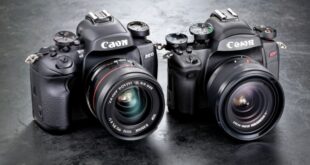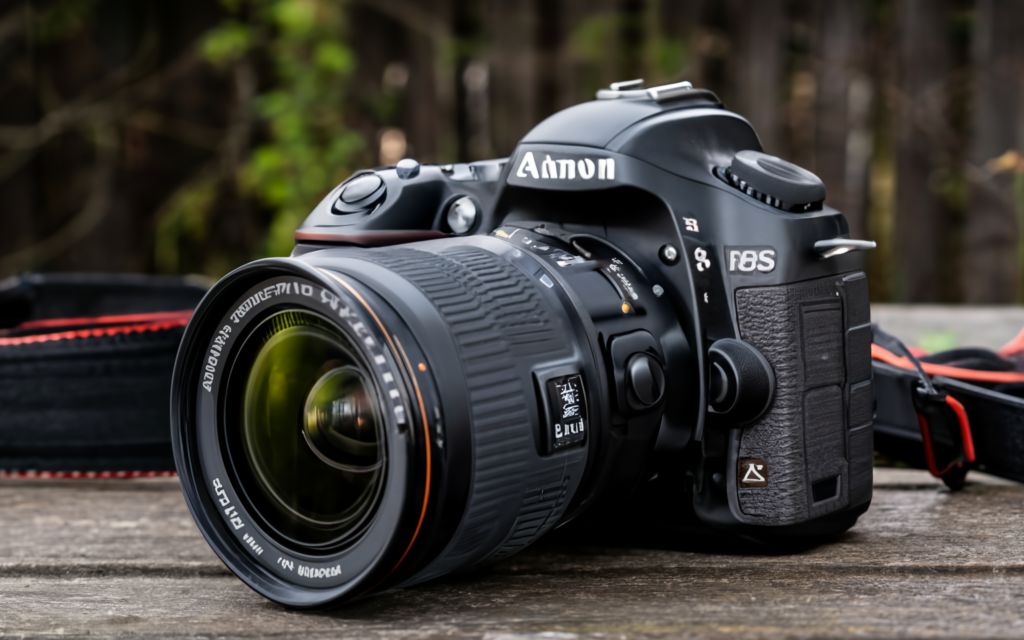Introduction
Hello there, photography enthusiasts! Are you ready to take your photography skills to the next level? Today, we will delve into the basics of using a DSLR camera, helping you unlock its full potential. Whether you’re a newbie or a seasoned photographer, understanding these fundamentals will elevate your photography game. So, let’s dive in and explore the seven essential aspects of using a DSLR camera!
1. 📸 Mastering Manual Mode 📸
One of the most powerful features of a DSLR camera is the ability to control every aspect of your image manually. By switching to manual mode, you have full control over settings like aperture, shutter speed, and ISO. This empowers you to capture images exactly as you envision them, resulting in stunning visual masterpieces.
Importance of Manual Mode
Understanding how to use manual mode is fundamental to unlocking the full potential of your DSLR camera. It allows you to manipulate settings according to the desired effect and lighting conditions, resulting in more professional-looking photographs.
How to Master Manual Mode
Start by experimenting with each setting individually. Learn how aperture affects depth of field, how shutter speed influences motion blur, and how ISO impacts image noise. Gradually, you’ll develop an instinctive understanding of how these settings work together to create the perfect shot.
2. 🌄 Composing Captivating Shots 🌄
Composition is an essential element of photography, dictating how subjects are arranged within the frame. It enables you to tell a story, evoke emotions, and draw the viewer’s eye to specific details. Understanding the principles of composition will significantly enhance your photographs.
The Rule of Thirds
Divide your frame into three equal sections vertically and horizontally, creating a 3×3 grid. Position your subject along these lines or at their intersections to create a visually pleasing composition.
Leading Lines
Utilize lines, such as roads, rivers, or fences, to guide the viewer’s eye towards the main subject. These lines create depth and add visual interest to your photographs.
3. 🌞 Mastering Natural Lighting 🌞
Lighting plays a crucial role in photography, and mastering natural light is essential for exceptional results. Unlike artificial lighting, natural light is constantly changing, presenting unique challenges and opportunities. Learning to adapt and make the most of natural light is vital.
Golden Hour Magic
The golden hour, which occurs during the first and last hour of sunlight, is a photographer’s dream. The warm, soft light during this time provides a beautiful glow, enhancing the overall look of your images. Shoot during these periods for stunning, ethereal results.
Diffused Light
Avoid shooting in harsh midday sunlight, as it can create harsh shadows and overexposed areas. Instead, look for diffused light, like the soft light on an overcast day or the light filtered through tree canopies, to achieve a more balanced and pleasing look.
4. 🖼️ Understanding Depth of Field 🖼️
Depth of field refers to the area of a photograph that appears in focus. It allows you to control the sharpness of your subject and the background. Understanding how to manipulate depth of field will give your images a professional and artistic touch.
Shallow Depth of Field
By using a wide aperture, such as f/1.8, you can achieve a shallow depth of field. This blurs the background, making your subject stand out and creating a beautiful, dreamy effect. Perfect for portraits or emphasizing a specific detail in your composition.
Deep Depth of Field
A narrow aperture, like f/16, increases the depth of field, resulting in both the foreground and background being in focus. This is ideal for landscape photography or situations where you want to capture the entire scene with clarity.
5. 📷 Exploring Focal Lengths 📷
Focal length refers to the distance between the lens and the camera’s image sensor. It affects the magnification and perspective of your photographs. Understanding different focal lengths will allow you to capture diverse types of shots and create different visual effects.
Wide-Angle Lens
Wide-angle lenses, typically ranging from 10mm to 35mm, capture a broader field of view. They are perfect for landscape photography and capturing expansive scenes with a greater sense of depth and scale.
Telephoto Lens
Telephoto lenses, with longer focal lengths such as 70mm to 300mm, magnify distant subjects, making them appear closer than they actually are. Ideal for wildlife or sports photography, telephoto lenses allow you to capture detailed shots from a distance.
6. 🌐 Mastering White Balance 🌐
White balance refers to the accurate reproduction of colors in your photographs. Different lighting conditions can cast various color temperatures, affecting the overall look of your images. Understanding white balance and adjusting it accordingly will result in true-to-life colors.
Auto White Balance
Most DSLR cameras offer an auto white balance (AWB) mode, which automatically adjusts the color temperature based on the lighting conditions. While it generally does a good job, it’s essential to familiarize yourself with other white balance settings for more precise control.
Custom White Balance
Some DSLR cameras allow you to set a custom white balance based on specific lighting conditions. By using a gray card or taking a reference photo, you can ensure accurate color reproduction in challenging lighting situations.
7. 💻 Post-Processing for Perfection 💻
Post-processing refers to the editing and enhancement of images using software like Adobe Lightroom or Photoshop. It allows you to fine-tune your photographs, bringing out their fullest potential. Understanding the basics of post-processing will take your images from good to exceptional.
Adjusting Exposure
Post-processing enables you to correct exposure issues, whether images are overexposed or underexposed. By adjusting the exposure, you can recover details in the shadows or highlights, resulting in a well-balanced image.
Enhancing Colors
Experiment with adjusting saturation, vibrance, and individual colors to make your images pop. Post-processing offers endless possibilities for enhancing colors and creating a specific mood or atmosphere.
Table: Basics of Using a DSLR Camera
| Aspect | Description |
|---|---|
| Manual Mode | Control all settings manually for precise control. |
| Composition | Arrange subjects within the frame to create visually pleasing shots. |
| Natural Lighting | Master the use of natural light for stunning results. |
| Depth of Field | Control the sharpness of your subject and background. |
| Focal Lengths | Explore different lenses for varied perspectives. |
| White Balance | Achieve accurate color reproduction. |
| Post-Processing | Edit and enhance images for the best results. |
Frequently Asked Questions (FAQ)
1. How do I switch to manual mode on my DSLR camera?
To switch to manual mode, locate the mode dial on your camera and turn it to “M.” This will allow you to manually adjust settings.
2. Why is composition important in photography?
Composition determines how your images look and feel. It guides the viewer’s eye and creates visually pleasing photographs.
3. What is the golden hour?
The golden hour is the first and last hour of sunlight, characterized by warm, soft light that enhances the beauty of your photographs.
4. How can I achieve a shallow depth of field?
Set your aperture to a wide opening, such as f/1.8. This will create a shallow depth of field, blurring the background and emphasizing your subject.
5. What is the ideal focal length for landscape photography?
Wide-angle lenses, typically between 10mm and 35mm, are ideal for capturing expansive landscapes.
6. How can I adjust white balance in post-processing?
Most photo editing software provides options to adjust white balance. Explore the temperature and tint sliders to achieve the desired color temperature.
7. Is post-processing necessary for every photograph?
Post-processing is not mandatory, but it allows you to refine and enhance your images, taking them to the next level of visual appeal.
Conclusion
Congratulations, photography enthusiasts! You have now gained a deep understanding of the basics of using a DSLR camera. By mastering manual mode, composition, natural lighting, depth of field, focal lengths, white balance, and post-processing, you are well on your way to capturing stunning photographs like a pro. Remember, practice makes perfect, so grab your camera and start honing your skills.
Now, it’s time to take action! Unleash your creativity, explore the incredible world of DSLR photography, and capture breathtaking moments. Embrace the challenges, experiment with different techniques, and continue learning to become a true master of your craft. The possibilities are endless, so go out there, seize the moment, and create photographic masterpieces that will leave a lasting impression!
Closing Statement
Disclaimer: The information provided in this article is for educational purposes only. Always consult your camera’s manual and user guides for specific instructions and guidelines. The author and publisher do not assume any responsibility for any consequences arising from the use of the information provided.
Thank you for joining us on this enlightening journey through the basics of using a DSLR camera. We hope you found this article informative and inspiring. Now, it’s time to grab your camera and embark on your photography adventure. Remember, every great photographer started somewhere, so don’t be afraid to make mistakes and keep pushing your creative boundaries.
Happy shooting, and may your photographs tell extraordinary stories!



